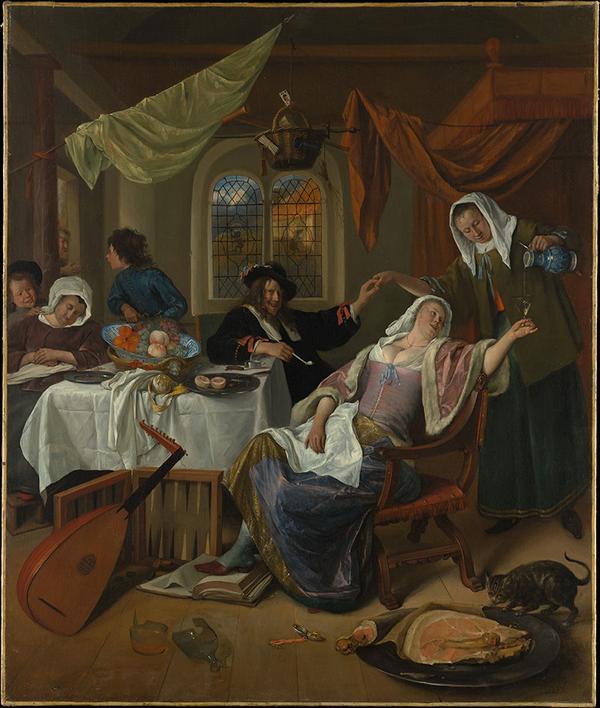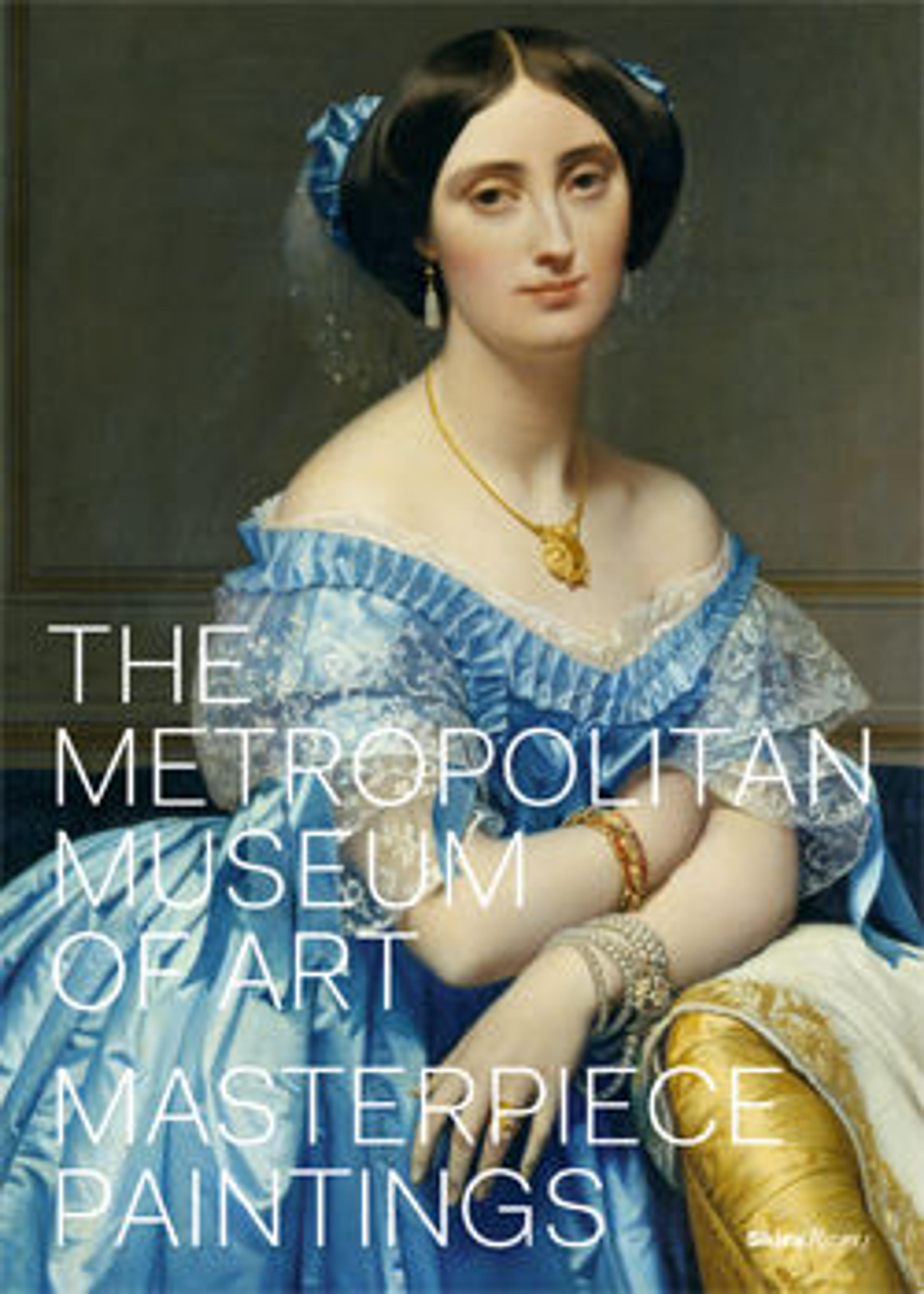The Dissolute Household
Steen often made himself the butt of his own jokes, placing his self-portrait at the center of domestic chaos. Here, the artist entwines his fingers with those of the maid, who pours his wife a generous serving of wine. Broken glass, a mischievous cat, and romping young boys contribute to the general impression of a household run amok. Suggestions of an ominous fate hang literally over the family’s heads, in the form of a basket containing a beggar’s crutch and can, as well as clappers, then used to warn of leprosy or the plague, and the jack of spades, signifying misfortune.
Artwork Details
- Title: The Dissolute Household
- Artist: Jan Steen (Dutch, Leiden 1626–1679 Leiden)
- Date: ca. 1663–64
- Medium: Oil on canvas
- Dimensions: 42 1/2 x 35 1/2 in. (108 x 90.2 cm)
- Classification: Paintings
- Credit Line: The Jack and Belle Linsky Collection, 1982
- Object Number: 1982.60.31
- Curatorial Department: European Paintings
Audio

5247. Jan Steen, The Dissolute Household
ADAM EAKER: This painting gives us a whole catalog of different transgressions.
NARRATOR: Sloth, lust, gluttony, sacrilege, gambling, vanity, and poor parenting—all are on full display in Jan Steen’s Dissolute Household.
ADAM EAKER: Whether it’s overindulgence in food and alcohol and tobacco; whether it’s the licentiousness of the husband’s flirtation with the maid; the way that the children are allowed to run wild. Even the unsupervised cat suggests that the patriarch of the family is not doing his job in imposing an atmosphere of discipline.
NARRATOR: Seated in the middle of it all is the artist himself. His sly smirk suggests he is in on the joke. At right, Steen’s wife may have served as the model for the reclining woman reaching for another drink; on the left, his own sons for the unruly boys tormenting a sleeping woman.
Throughout the raucous scene are smaller, still-life arrangements. The table features a blue and white porcelain bowl filled with fruit; a peeled lemon; a halved peach; and tobacco, a relatively recent import from the New World—and one frowned upon by Calvinist preachers. Overhead is a more grave, symbolic warning.
ADAM EAKER: This still-life in a basket that hangs suspended over the family contains plague rattles, clappers that a leper would use to announce his or her presence, sticks that might be used to deliver a beating. All sorts of intimations of the kind of dire fate that can await people who engage in this sort of excess.
NARRATOR: Most of all? We witness what may be the supreme sin in Dutch culture: a disorderly household.
ADAM EAKER: Even to this day, Dutch parents who want their children to clean up their rooms can tell them that their rooms are starting to look like a household by Jan Steen. It’s something that every Dutch person immediately will recognize.
More Artwork
Research Resources
The Met provides unparalleled resources for research and welcomes an international community of students and scholars. The Met's Open Access API is where creators and researchers can connect to the The Met collection. Open Access data and public domain images are available for unrestricted commercial and noncommercial use without permission or fee.
To request images under copyright and other restrictions, please use this Image Request form.
Feedback
We continue to research and examine historical and cultural context for objects in The Met collection. If you have comments or questions about this object record, please contact us using the form below. The Museum looks forward to receiving your comments.
